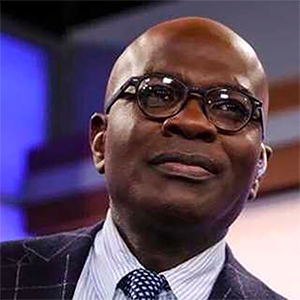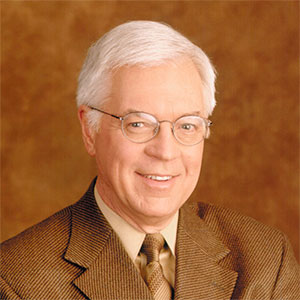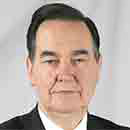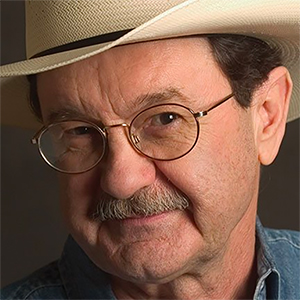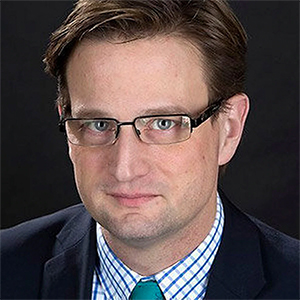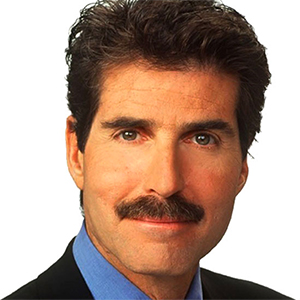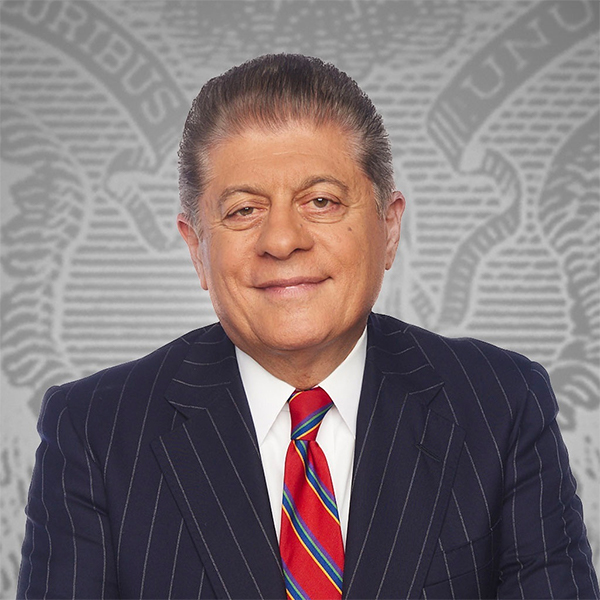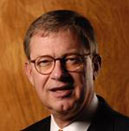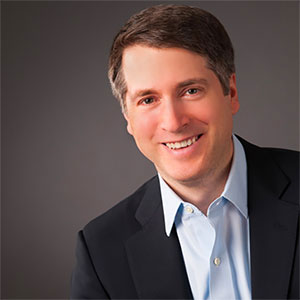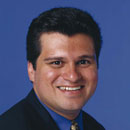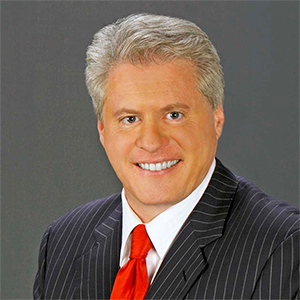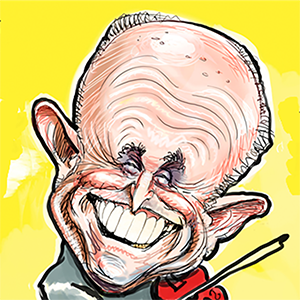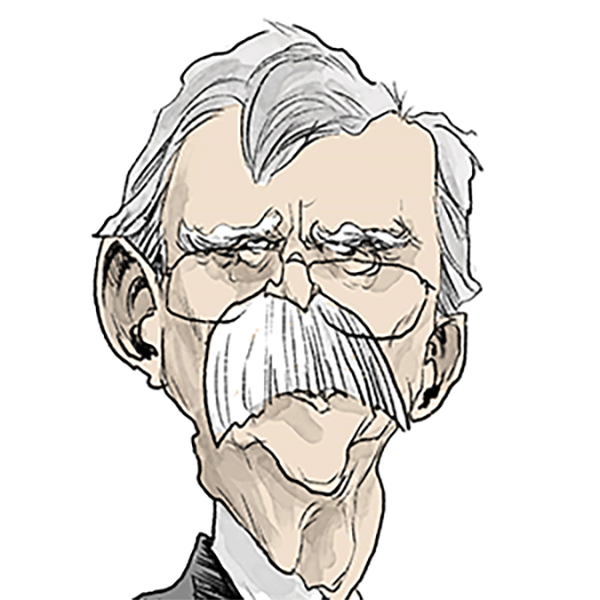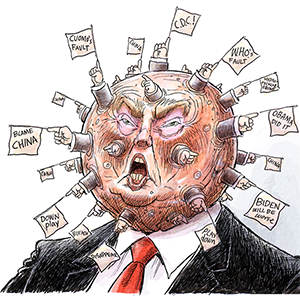Politics
/ArcaMax
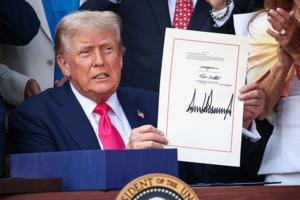
Editorial: Deep in a fiscal hole, Congress just keeps digging
In a remarkable achievement, the One Big Beautiful Bill Act got worse with each iteration before finally being enacted last week. On plausible assumptions, the final version will add more than $5 trillion to deficits over the next 10 years, moving the track of public debt from unsustainable to all but unhinged. As Congress turns to its budget ...Read more

Editorial: SCOTUS -- Trump likely to 'succeed' in restructuring case
The U.S. Supreme Court on Tuesday allowed President Donald Trump to move forward with shrinking the federal workforce. The move is notable as much for the outcome as for the dynamics involved.
The case stemmed from an executive order the president issued early in February directing administration officials to formulate plans for “large-scale�...Read more

Trump administration sues California over egg prices, farm animal welfare laws
SAN JOSE, Calif. — Accusing California of imposing “unnecessary red tape” on the production of eggs, the Trump administration is suing the state over animal cruelty laws it claims have driven up prices nationwide.
“California has effectively prevented farmers across the country from using a number of agricultural production methods ...Read more

MSU professor Josh Cowen running for Congress in key mid-Michigan district
Democrat Josh Cowen, an education policy professor at Michigan State University, launched a campaign for the U.S. House on Thursday, aiming to take on first-term Republican Rep. Tom Barrett next fall.
Cowen, 46, of East Lansing plans to focus his campaign on affordability and education issues. His research has focused on teacher quality, ...Read more

Navy reservist announces campaign to unseat Rep. Jen Kiggans
With congressional midterms still more than a year away, Democrat James Osyf is the latest candidate to announce intentions to challenge Republican Rep. Jen Kiggans in Virginia’s 2nd Congressional District.
Osyf, a first-generation Ukrainian-American and a Navy reservist who served on the USS Norfolk submarine, announced his candidacy ...Read more

FBI headquarters fight stymies spending bill in Senate
Plans for the Senate Appropriations Committee to approve a Justice Department funding bill collapsed on Thursday amid a Republican revolt over an amendment about where to put the new FBI headquarters.
Senate appropriators scattered from the meeting with no clear path forward on how to approve the broader fiscal 2026 Commerce-Justice-Science ...Read more
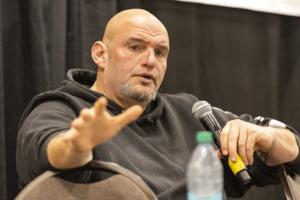
Trump praises Fetterman for saying calls to abolish ICE are “inappropriate and outrageous”
U.S. Sen. John Fetterman, D.-Pa., is still tweeting about ICE after earning President Donald Trump’s praise Wednesday for slamming calls to abolish Immigrations and Customs Enforcement.
Fetterman said “ICE performs an important job for our country” in the first of a pair of posts uploaded to X on Thursday.
“Any calls to abolish ICE are...Read more
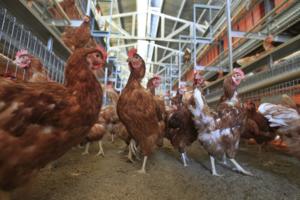
Trump administration sues California over cage-free egg and animal welfare laws
The Trump administration has sued California over the state's voter-approved animal welfare law, which protects hens, pigs and calves from being kept in small cages, claiming the law has driven up egg prices and violates federal farming laws and regulations.
"California has contributed to the historic rise in egg prices by imposing unnecessary ...Read more
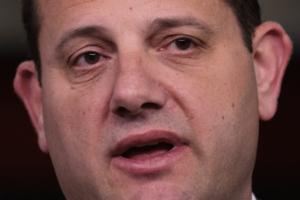
Will vote for Trump's 'Big Beautiful Bill' come back to haunt David Valadeo?
Democrats quickly fired away at Rep. David Valadao’s record once President Donald Trump signed the “Big Beautiful Bill” that cut taxes and Medicaid funding, saying that because of Valadao’s vote, “rural hospitals across America are now at risk of closing.”
It’s impossible to predict the specific impact on hospitals and for that ...Read more

Secret Service suspends 6 agents after President Trump assassination attempt
The Secret Service has suspended six agents tasked with securing the Pennsylvania rally where Donald Trump was shot last year.
Matt Quinn, Secret Service deputy director, told CBS News that their punishments range from 10 to 42 days of leave without pay or benefits. They include several agents at the service’s Pittsburgh field office, along ...Read more
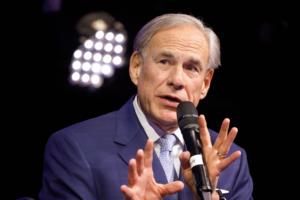
Texas Gov. Abbott calls for redrawing congressional map ahead of midterms
WASHINGTON — Texas Gov. Greg Abbott, a Republican, is directing state lawmakers to redraw the state’s congressional map at a special legislative session later this month.
Under the current GOP-drawn Texas map, Republicans won 25 of the state’s 38 House seats last fall, while Democrats took the remaining 13 districts. But allies of ...Read more
Special session in Georgia to address impacts of 'big, beautiful bill' unlikely
ATLANTA — President Donald Trump’s “big, beautiful bill” will have ripple effects across Georgia for years to come.
But a bipartisan group of state legislators said any adjustments that need to be made to the state budget can wait until January, when they come back in regular session. And staff for Gov. Brian Kemp, who has the authority...Read more

Trump's Brazil tariffs gift Lula surprise tailwind for 2026 vote
Brazil spent months flying under the radar as Donald Trump upended global trade. Now that it’s in the spotlight, President Luiz Inacio Lula da Silva may stand to benefit from the attention.
Hours after the U.S. president threatened to hit Brazil with 50% tariffs, the leader known universally as Lula announced that, rather than rush to appease...Read more
South Korea struggles with uncertainty over US trade negotiations
SEOUL, South Korea — As the Trump administration has been churning out trade threats this week, South Korea, a crucial trading partner and military ally, has been struggling — like many — to navigate the uncertainty that looms over trade negotiations with Washington.
On Monday, Trump sent a letter dictating new tariff rates to 14 ...Read more

Commentary: Back from the brink: Trump's economy soars instead of crashing
Many so-called experts predicted that President Donald Trump’s economic agenda would usher in an inflationary Armageddon. This projection was so oft repeated in the media that many Americans, especially Democrats, believed a depression was imminent. Yet the economy is thoroughly beating expectations, with consumers’ expectations becoming ...Read more
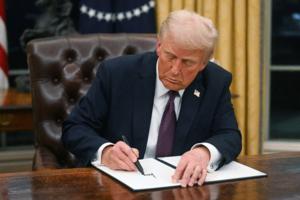
Why Donald Trump's legal strategies are working -- some of the time
When President Donald Trump decided last month to send the California National Guard to Los Angeles over the objections of Gov. Gavin Newsom, many political and legal watchers were certain that courts would view the move as illegal, a belief that was quickly shattered when a panel of appellate judges appointed by presidents from both political ...Read more
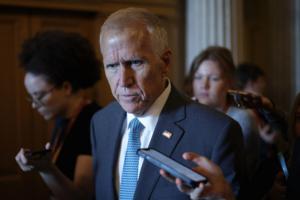
N.C. Sen. Thom Tillis tells CNN he warned Trump that 'big beautiful bill' could be 'his Obamacare'
Sen. Thom Tillis, a North Carolina Republican, told President Donald Trump that the One Big Beautiful Bill Act could become his “Obamacare.”
The remark, made to CNN’s Jake Tapper in an exclusive interview that aired Wednesday night, is a striking comment with the midterm elections looming over Republicans.
CNN’s broadcast marked Tillis...Read more

Brazil assets plunge after Trump hikes tariff rate to 50%
President Donald Trump’s threat to impose 50% tariffs on Brazilian goods sent the country’s currency plunging as the U.S. leader sharply escalated a dispute with Latin America’s largest nation and leftist leader Luiz Inacio Lula da Silva.
In a letter posted to his social media account, Trump cited Jair Bolsonaro — the right-wing former ...Read more
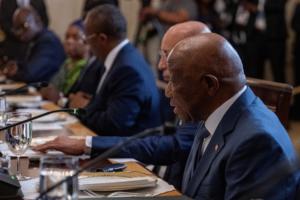
Trump praises leader of English-speaking African nation for his 'good English'
President Donald Trump praised Liberian President Joseph Boakai for speaking English articulately, seemingly unaware of the fact that English is Liberia’s national language.
“Such good English, that’s beautiful,” Trump said during a Wednesday meeting at the White House with five African leaders. “Where did you learn to speak so ...Read more

Former Rep. Stephanie Murphy announces bid for local office in Florida
WASHINGTON — Former Florida Rep. Stephanie Murphy, once a leader of centrist Democrats in the House, announced Wednesday that she is running for mayor of Orange County, home to Orlando.
“You may know me as your former congresswoman,” Murphy says in a video announcing her campaign. “Before I ever stepped foot in Washington, I worked in ...Read more
Popular Stories
- What to know about the 'Big, Beautiful Bill' cuts to Medicaid
- Trump's Brazil tariffs gift Lula surprise tailwind for 2026 vote
- A plan to take human rights off the table at the State Department
- Commentary: Back from the brink: Trump's economy soars instead of crashing
- South Korea struggles with uncertainty over US trade negotiations


